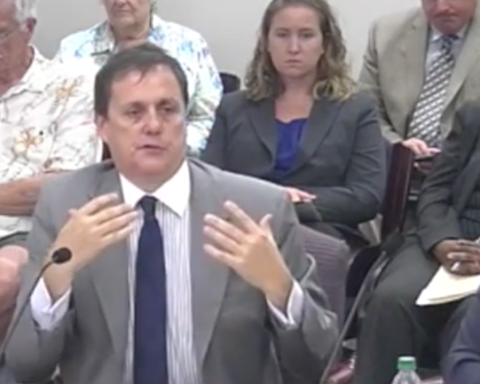As 2015 winds down we took a look back at the year’s news in St. Petersburg and came up with a list of the top 10 most interesting happenings. Whether the news evoked outrage in a community, excitement, or even heartbreak, these are the top headlines of 2015.
No. 7 – Historic preservation
St. Petersburg is home to several historic neighborhoods: Historic Old Northeast, Historic Kenwood, Old Southeast and others. A debate over how to obtain local historic designation in those neighborhoods came to a boil in 2015 as residents rallied both for and against loosening the process to get that ball rolling.
Until August, two-thirds of a neighborhood would have to “vote” to begin the process of obtaining local historic designation. That threshold included every single homeowner, whether they lived in their homes or not. Those who chose not to vote were automatically considered a no-vote.
In late August that threshold changed to 50 percent of all homeowners, plus one. In a neighborhood of 2,000 homes, that means about 300 fewer yes votes are needed.
But the change was a far cry from what historic preservation supporters wanted. Originally they asked for 50 percent plus one of only those who chose to weigh in. But opponents, many of whom cited property rights, argued that threshold was too low because the process could launch with just a very small percentage of homeowners taking a side.
That led to proposed compromise after proposed compromise including providing a minimum response threshold and keeping the two-thirds threshold, but among only those who voted.
Supporters and critics spent weeks, months even, lobbying City Council members. A public records request of those emails unveiled hundreds both in favor and opposition.
Of more than 450 emails analyzed, about 300 were in opposition to an ordinance change. Most of those emails were a form letter. This is how the blasts from hundreds of St. Pete residents, many from Snell Isle, read:
“As a homeowner living in St. Petersburg, I oppose the proposed change to our Historic Neighborhood Preservation Ordinance that would lower the designation vote threshold to 50 percent plus 1 of respondents. This change would put my private property rights in the hands of a small minority of homeowners, and it would infringe on my ability to change my own house. It’s not fair, and the city should not support this shortsighted plan.
“The current threshold for designation is 66 percent of property owners in the neighborhood. This ensures that most everyone in the neighborhood supports preservation — it is fair, it’s democratic and it prevents the rule of a few over what we can do with our homes. Please vote NO to changing the threshold for Historic Neighborhood Preservation to 50 percent plus 1 of respondents, and keep the threshold at 66 percent of property owners. Don’t make it easier for other people to take over my property decisions!”
But despite the heavy pressure leading up to a City Council vote, the actual public comment during the August meeting turned out to weigh heavily in favor of supporters of the change.
The heightened emotion on both sides of the issue led to a City Council meeting that carried on from its beginning on a Thursday night into the wee hours of the morning Friday. It was perhaps the most chaotic of any council meeting this year.
Motions made by council included a minimum threshold of 30 percent of homeowners responding with a 75 percent affirmative response rate. That motion, which failed, was proposed by Karl Nurse.
Another, proposed by Wengay Newton, asked for a 50 percent plus one response with a two-thirds affirmative vote, also failed.
A motion to require a two-thirds ballot response with a two-thirds yes-vote threshold failed.
There was a motion for a 30 percent minimum response rate with two-thirds yes votes. That also failed.
And that’s how the night went.
The motion that ultimately passed wasn’t even the first time the motion had been made. Councilmember Darden Rice changed her original no vote to a yes.
It was the ultimate definition of chaos fueled by more than 75 nods either in favor or opposition to any changes at all and years of asking the same question: Should it be easier for neighborhoods to obtain historic designation?
The lengthy meeting led to some, particularly former City Councilman Jeff Danner, questioning the wisdom of council taking a vote at such a late hour and after many hours of debate.
At one point one council member even uttered the words, “Blah, blah, blah.”
The issue was quiet after the controversial vote. However, historic preservation supporters did see at least one win this year when early in December a historic home in Allendale Terrace was granted local historic designation.









